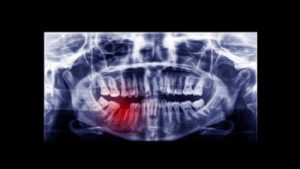Root canal treatment is a widely performed dental procedure that helps save a severely infected or decayed tooth. Despite the misconceptions and fears often associated with it, root canal therapy is a relatively straightforward process that offers immense relief from tooth pain and preserves your natural tooth. One of the most frequently asked questions by patients undergoing this treatment is: How long does it take to recover from a root canal?
In this guide, we’ll explore everything you need to know about root canal recovery time, what factors influence it, what symptoms are normal post-treatment, and how to ensure a smooth healing process with proper care.
Understanding the Root Canal Procedure
Before we delve into recovery time, it’s important to understand what a root canal entails.

During the root canal process, your dentist will remove the infected pulp, then carefully cleanse and sterilise the interior of the pulp chamber and pulp canals, and then fill and seal the space with a root canal filling material. A short-term filling might be applied at first, with a long-term filling or a dental crown at a later root canal appointment.
This common dental procedure is typically recommended to save a natural tooth and avoid a tooth extraction.
Root Canal Recovery Time: What’s Normal?
Most patients can expect root canal recovery time to range from a few hours to several days, depending on the individual’s situation. Typically, you’ll be able to resume normal activities on the same day or the day after your procedure, although you may experience mild discomfort for a short period.
Here’s a general breakdown:
- Day of Procedure: Numbness from local anaesthesia will linger for a few hours. Once it wears off, you may feel pain or mild pain near the treated tooth. It’s common to experience tooth sensitivity and tenderness, especially when chewing.
- 1–3 Days After: Root canal recovery during this stage usually includes some mild discomfort or tooth discomfort, which is usually manageable using non-prescription pain medication and soft foods.
- 1 Week After: Pain and tenderness should subside. If a temporary filling was used, you’ll likely return to your root canal treatment provider to receive a permanent crown or permanent filling.
- 2+ Weeks After: If symptoms persist or worsen, contact your dental professional to check for complications such as a root canal infection or further infection.
Factors That Influence Recovery Time
Several variables can affect how quickly and comfortably you recover from a root canal. Understanding these factors can help set realistic expectations and guide your aftercare decisions.
1. Severity of Infection
An infected pulp or bacterial infection that has spread to the surrounding soft tissue or bone can result in an extended healing time.
2. Condition of the Affected Tooth
If the affected tooth was cracked, had multiple canals, or was part of a complex case, the healing process might take longer.
3. Type of Restoration
Whether you receive a dental crown, permanent filling, or a temporary filling affects how soon the treated tooth returns to normal function.
4. Overall Health and Oral Hygiene
Your general health and oral health habits, like brushing your teeth regularly and attending routine dental check-ups, significantly influence recovery.
5. Expertise of the Dentist
Choosing an experienced dentist ensures a more successful root canal treatment, reducing the risk of complications and speeding up recovery.
Common Symptoms During Root Canal Recovery
Understanding the process can help you feel more at ease and monitor your root canal recovery properly. Common, non-concerning symptoms include:
- Tooth sensitivity to pressure or temperature
- Mild pain or aching near the treated tooth
- Gum tenderness or swelling in the area
- Mild discomfort when chewing or touching the tooth
These symptoms are normal and should gradually fade. However, it’s crucial to contact your dental professional if you notice:
- Persistent or severe pain beyond 3–5 days
- Swelling that worsens
- Signs of a root canal infection (e.g., fever, pus, foul taste)
- A loose or broken temporary filling or dental crown
Ways to Support a Smooth and Speedy Recovery
Recovery is not just about time. It’s also about proper care. Here are some practical tips to aid your healing process:
1. Eat Soft Foods
For at least a few days, eat soft foods like mashed vegetables, yoghurt, scrambled eggs, and soups. Avoid hard and chewy foods that put pressure on the affected tooth.
2. Avoid Chewing on the Treated Side
Until your permanent crown is placed, refrain from biting down on the treated area to protect the temporary filling and minimise irritation.
3. Practise Good Oral Hygiene
Brush and floss teeth regularly, but be gentle around the treated tooth. Using fluoride toothpaste can help strengthen surrounding teeth and prevent future decay.
4. Manage Pain Responsibly
Over-the-counter medications like ibuprofen or paracetamol can help manage mild discomfort. Always follow your dentist’s instructions.
5. Attend Follow-Up Appointments
Never skip your scheduled root canal appointment for the permanent crown or further treatment. This part of the process is crucial to protect the tooth and reduce the risk of further infection.
6. Watch for Signs of Trouble
Be alert for unusual swelling, pain, or changes in the tooth. If in doubt, see your dentist immediately.
Potential Complications That May Delay Recovery
While most root canal treatments are successful, certain complications may extend your root canal recovery time:
- Root canal infection due to incomplete removal of infected tissue
- A cracked dental crown or temporary filling
- Missed pulp canals during the root canal process
- Delayed placement of the final filling material
- Re-infection from poor oral hygiene
In these situations, further treatment such as re-treatment or even tooth extraction may be necessary. This is why choosing a skilled dentist and attending all follow-up visits is crucial.
Saving Natural Teeth with Root Canal Therapy
A major advantage of undergoing root canal therapy is the ability to retain your natural teeth. Preserving your natural tooth maintains jaw structure, supports neighbouring teeth, and enhances your ability to bite and chew normally.
Opting for a dental implant or bridge as a replacement is more invasive and time-consuming than undergoing root canal treatment, so it’s worth making every effort to keep your natural tooth through this dental treatment.
Long-Term Outlook After a Root Canal
After the root canal procedure is finished, the tooth may remain healthy for life when supported by proper oral care and regular dental check-ups. Avoiding hard foods, staying on top of your dental care, and visiting your dentist for regular assessments all contribute to long-term oral health.
Remember: just because the tooth no longer contains nerves doesn’t mean it can’t develop issues. Protect it as you would any other tooth.
Root Canal vs. Tooth Extraction: What Heals Faster?

In contrast, a root canal procedure allows patients to preserve their natural tooth, avoiding the impact that tooth loss has on oral health and jaw structure. Recovery from a successful root canal treatment typically involves mild discomfort for a few days, whereas extraction can lead to extended healing time, especially if the soft tissue or bone requires significant healing.
Keeping your natural teeth supports long term oral health, and with proper aftercare, a treated tooth can remain functional for life. Choosing the right dental treatment depends on the tooth’s condition, but in many cases, root canal therapy provides a faster, more sustainable path to healing, particularly when carried out by an experienced dentist using quality filling material and restoration.
Conclusion: Healing at Your Own Pace
Recovery following a root canal differs for each individual, though the majority of individuals feel significantly better within a few days. While minor tooth sensitivity and mild discomfort are normal, extended or severe pain should prompt a visit to your dental professional.
The key to a successful root canal treatment is a combination of expert care, proper aftercare, and a commitment to oral health. By following your dentist’s advice, avoiding hard and chewy foods, practising good hygiene, and attending all follow-ups, you can help your body heal and enjoy a stable, functional treated tooth for years to come.
If you’re dealing with persistent tooth pain, concerned about an infection, or looking to prevent future dental issues, a consultation with Infinity Dental Care could be a valuable next step. The team at Infinity Dental Care offers experienced care and personalised support for those navigating root canal recovery and broader oral health needs. To learn more or book an appointment, call 02 9159 6237.
Note: Any surgical or invasive procedure carries risks. Before proceeding, you should seek a second opinion from an appropriately qualified health practitioner.
Resources
Cherney, K. (2023). ‘How Much Pain Will I Have After a Root Canal and When Should I Seek Help?’. Healthline, 17 February. San Francisco, CA: Healthline Media.
https://www.healthline.com/health/pain-after-root-canal
No author listed. (n.d.). ‘How to Brush Your Teeth and Floss Properly’. Colgate. New York, NY: Colgate-Palmolive Company.
https://www.colgate.com/en-us/oral-health/brushing-and-flossing/how-to-brush-your-teeth-properly
No author listed. (n.d.). ‘Slide show: Root canal treatment’. Mayo Clinic. Rochester, MN: Mayo Foundation for Medical Education and Research.
https://www.mayoclinic.org/diseases-conditions/tooth-abscess/multimedia/root-canal/sls-20076717


